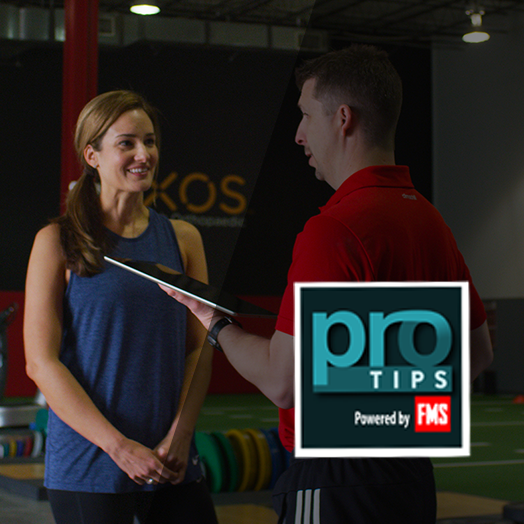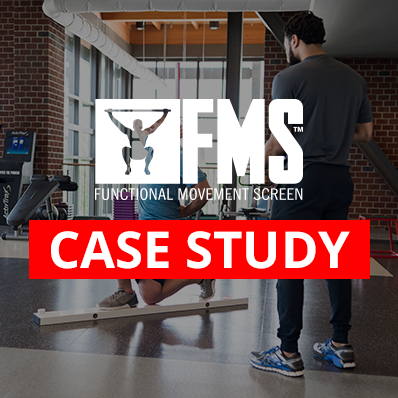Youth Soccer Injures and The 3 R's: Risk Assessment, Rehabilitation, and Reduction
Written by Brad Papson FMS
Youth soccer demands an equal balance of strength, stability, mobility, explosiveness, and endurance. Unfortunately, when breakdowns in this balance occur, injuries happen. Recent studies have found that 50% of youth sports injuries occur from overuse. Meanwhile, there is a growing epidemic of ACL injuries occurring among younger athletes.
The greatest predictor of an injury is a previous injury. 
What is wrong with that statement?
Have our athletes fully recovered from their previous injury?
These questions would seem to have obvious answers. Unfortunately, “fully recovered” is not objective.
With such a high demand placed on our young athletes, more and more of them are breaking down. Medical providers need to look further into the influences over injuries.
Risk Assessment
The Functional Movement Screen (FMS) is one variable that should be considered when measuring an athlete's risk of injuy. While it does not have any direct correlation to skill needed to play a sport, it does provide insight into how an athlete is moving. The FMS provides a breakdown of the athlete's movement patterns - those that are considered ideal or acceptable and those that need to be corrected to help minimize injury risk. It can also be utilized at the end of an athlete’s rehabilitation to assess their “readiness” to return to sports.
During the rehabilitation process, the Selective Functional Movement Assessment (SFMA) provides a movement differential diagnosis based on movement patterns. The detailed assessment identifies mobility versus motor control dysfunctions influencing the athlete’s pain. This allows the clinican to provide the most appropriate intervention - manual therapy and corrective exercises.
Once the rehabilitation phases move out of the pain cycle, the Functional Movement Screen can be useful to provide the athlete with a better understanding of fundamental movemetn patterns and how this can associate to injury risk.
The Star-Excursion Balance Test and Y-Balance Test have both been found to be good risk assessment tools. An athlete who has a decreased ability to balance and reach also has a 6.5x increase chance of injury.
Rehabilitation
When trying to get an athlete back onto the playing field, there are multiple rehabilitation keys. Pain and proper movement are not always related. Once we get pain under control, are we making sure that these athletes are moving properly in order to return to the field?
Proprioception, more simply stated as your awareness of your body in space, is a major component of one’s balance, and body control, namely motor/muscular, are imperative in the return to play continuum. All too often, that seemingly innocuous mild ankle sprain becomes recurrent. Approximately 30-40% of ankle sprains become recurrent. Following the snowball effect, that mild ankle sprain results in a loss of motion, which in turn can become a predictor of a knee injury. This now traumatic non-contact ACL injury could have been prevented through a simple course of physical therapy.
We need to be looking at regaining the balance of stability and mobility. Gray Cook and Mike Boyle, two leaders of the Rehabilitation and Sports Medicine fields, discussed the ideas of their Joint-by-Joint approach to analyzing movement patterns. Without trying to do them a disservice by oversimplifying, I summarize their theory: we need to assess how each joint works on/with the next in line. The foot needs stability, ankle mobility, knee stability, hip mobility/stability, lumbar spine stability, thoracic spine mobility, scapulothoracic stability, and glenohumeral mobility. As you can see, each joint needs to have certain characteristics in order for the next joint in line to perform optimally.
 It ties directly into regional interdependence, where “seemingly unrelated impairments in a remote anatomical region may contribute to, or be associated with, the patient’s primary complaint” (Wainner). Imagine if you throw a rock into a pool, that large splash at impact precedes a ripple effect throughout the rest of the pool. In the same way, improper mobility at the ankle is going to have a huge effect on the knee, followed by a smaller impact at the hip, and progressively smaller impacts throughout the rest of the body.
It ties directly into regional interdependence, where “seemingly unrelated impairments in a remote anatomical region may contribute to, or be associated with, the patient’s primary complaint” (Wainner). Imagine if you throw a rock into a pool, that large splash at impact precedes a ripple effect throughout the rest of the pool. In the same way, improper mobility at the ankle is going to have a huge effect on the knee, followed by a smaller impact at the hip, and progressively smaller impacts throughout the rest of the body.
Soccer is a high demand activity requiring an equally demanding rehabilitation. A lot of time is spent on one foot, running, and jumping. These activities can be and need to be practiced in therapy prior to returning to sports order to make sure they are not impaired. It is imperative that you seek a therapist that is going to provide careful attention to such details when you are recovering from an injury.
Reduction of Injuries
Neuromuscular Training Methods (NMT), built on dynamic stretching, motor control, agility, and plyometric training, have become trendy with great reasoning. 15-20 minute warm-up programs, easily adaptable for practice and pre-game routines, have a significant impact on injury reduction.
The PEP program, started by Santa Monica Sports Medicine Foundation, has a 2 year study showing a one year 88% decrease in ACL injuries and two year 74% decrease in ACL injuries among 3,000 female soccer players aged 14-18.
FIFA has developed a NMT program readily available to the public. The FIFA 11(www.fifa.com) provides injury prevention in a soccer-conditioning program with a secondary goal to improve performance.
A NMT program developed by Dr. Cynthia LaBella, showed a 44% decrease in non-contact lower extremity injuries and a 34% decrease in non-contact ankle sprains, while Canadian researchers found a NMT program cut the injury rate in half for 13-18 year old soccer players.
What should we be looking for?
Yes, there is still a high rate of traumatic injuries, and the staggering numbers continue to climb, but these readily available programs are devised to REDUCE injury rates, not necessarily prevent injuries.
A thorough program will not only assess the athlete’s current injury, but it will also utilize the most current evidence-based practice available to make sure the first injury is fully recovered. This program will include a full body movement analysis, risk assessment, functional training/testing, educational materials, and should be tailored to provide a lasting exercise program to make weaknesses strengths and strengths stronger.
Ultimately, “hindsight explains the injury that foresight would have prevented.” Let us work together to eliminate the games that are lost.
References:
1) www.aaos.org
2) http://well.blogs.nytimes.com/2011/10/26/a-new-breed-of-knee-injury-in-young-athletes/
4) J Orthop Sports Phys Ther. 2006; 36(12):911-919. doi:10.2519/jospt.2006.2244)
5)A Joint-by-Joint Approach to Training, www.strengthcoach.com/public/1282.cfm
6) www.smsmf.com
7) www.fifa.com
8) Effect of Neuromuscular Warm-up on Injuries in Female Soccer and Basketball Athletes; Cynthia LaBella et al. Arch Pediatr Adolesc Med. 2011;165(11):1033-1040
9) Emery and Meeuwisse, 2010, Br J Sport Med
Brad Papson, PT, DPT, OCS is the Clinical Manager for Premier Orthopaedics and Sports Medicine Associates in Folsom, PA. He also co-chairs the Athlete’s Advantage Program developing rehabilitation and prevention programs for local high school and travel teams.
For more info contact Brad Papson at: bpapson@premierortho.com or 610-586-7000.
Related Resources
-
Whiteboard Talks: Hardware vs Software
Posted by FMS
-
Play, Practice, or Train?
Posted by Gray Cook





